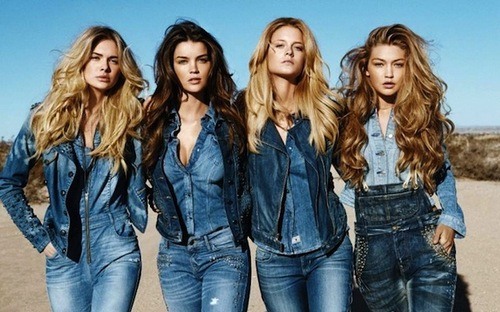The Marketing mix of Guess analyses the 4Ps of Guess, which includes the Product, Price, Place, and Promotion of Guess. Guess is a public company of American origins. It is associated with the retail and lifestyle industry and deals in accessories and apparel. Guess has been involved in various aspects of business, like distribution, marketing, design, and licensing. It is also the owner of the Marciano line. The company was founded in 1981 by its co-founders, Maurice Marciano and Paul Marciano. Some of its competitors are as follows-
- Pepe Jeans
- Levis
- Calvin Klein
- Ralph Lauren Beebe
- Stores
About Guess
- Type: Fashion Company
- Industry: Clothing
- Founded: 1981
- Founder: Georges Marciano
- Headquarters: California, United States
- Area served: Worldwide
- Key people: Maurice Marciano (Chairman) and Carlos Alberini (CEO)
- Number of employees: 13,000
Table of Contents
Guess Product Strategy
Guess is one of the most recognized brands in the Fashion industry and is associated with diversified product offerings in segments like perfumes, cosmetics, and apparel. One of its most distinctive qualities is its perfect fitting and unique style of clothing, especially jeans, which have helped it achieve the desired position in the consumer market. Guess is for fashion-centric people and caters to every gender, and its product kit includes-
For women, it has
- Sunglasses
- Watches
- Jewellery like rings, bracelets, earrings and necklaces
- Sportswear
- Underwear comprises bras, panties, loungewear and lingerie
- Accessories like scarves, wallets, gloves, belts, and fragrances like Dare and Seductive
- Footwear like ankle boots, sneakers, flats and court shoes
- Bags like shoulder bags, leather bags and handbags
- Apparel includes trousers, skirts, tops, sweaters, dresses, jackets and cardigans
- Denim includes jeans, jeggings, boot cuts, yoga pants, jumpsuits, tops, skirts, and shorts
For men, its collection includes
- Sunglasses
- Watches
- Jewellery
- Sportswear
- Underwear-like boxers, briefs and trunks
- Accessories like key ring belt fragrances and wallets
- Shoes like sneakers and boots
- Bags
- Apparel includes trousers, cardigans, shirts and t-shirts
- Denim like slim and tapered
Its kid’s section is for both boys and girls and is divided into three segments according to age group. These are below two years, between 2 and 6 years, and the junior section between 6 and 16 years.
The product mix of Guess in 2023 is as follows(Source)
- Apparel: Guess offers a wide range of clothing for both men and women, including jeans, tops, dresses, jackets, and activewear.
- Accessories: Guess is known for its accessories, which include handbags, wallets, belts, sunglasses, watches, and jewelry. They often have many trendy and stylish accessories to complement their clothing lines.
- Footwear: Guess manufactures and sells shoes for men, women, and children, including sneakers, boots, heels, sandals, and more.
- Fragrances: Guess produces a range of fragrances for both men and women, offering a variety of scents to choose from.
- Watches: Guess is known for its fashionable watches, which come in various styles and designs, catering to different tastes and preferences.
- Eyewear: They offer a selection of eyeglasses and sunglasses, often reflecting the brand’s signature style.
- Handbags: Guess handbags are a prominent part of their product lineup, with various sizes, styles, and materials available.
- Jewelry: This includes a range of fashion jewelry items such as necklaces, bracelets, earrings, and rings.
- Outerwear: Guess also produces stylish outerwear options such as coats and jackets for colder seasons.
- Kids’ Clothing: Guess offers clothing and accessories for children, including clothing items like shirts, jeans, backpacks, and hats.
- Home and Lifestyle Products: Some Guess stores may also carry lifestyle products such as bedding, home decor items, and more, though this category can vary.
Guess Place Strategy
Guess has an international presence and spreads its product quality and network to several countries worldwide. Its headquarters is in Los Angeles, in the United States.
Guess started its operations from an outlet in Beverly Hills and currently has outlets in the Middle East, Latin America, Australia, Africa, Europe, South America, and Canada. Guess has a strong distribution channel, including direct-to-consumer sales representatives, licensing agents, and wholesalers.
Direct-to-consumer options include retail stores and e-commerce portals. In Canada and the United States, Guess has 450 outlets, and outside these countries, it has 380 outlets. In Asia and Europe, it also has 190 concessions.
Guess operates through international and domestic sales volume wholesale channels, and its distributors and licensees have operations in 800 global outlets.
Here are five key aspects of Guess’s place (location) marketing strategy:
- High-Traffic Shopping Centers: Guess often strategically places its stores in high-traffic shopping centers and malls to maximize visibility and foot traffic. This allows the brand to capture the attention of potential customers already shopping for fashion and accessories.
- Global Presence: Guess has a global presence with stores in major cities and fashion capitals worldwide. They carefully select prime urban locations and tourist destinations to tap into a diverse customer base.
- E-commerce Integration: In addition to physical stores, Guess has a solid online presence. Their e-commerce strategy allows customers to shop from anywhere, extending their reach beyond brick-and-mortar locations.
- Outlet Locations: Guess may establish outlet stores in malls or centers to offer discounted merchandise. This strategy aims to attract bargain shoppers and clear excess inventory while maintaining brand visibility.
- Market Research: The company conducts market research to identify emerging markets and consumer trends. This data-driven approach helps Guess make informed decisions about where to expand or open new stores, ensuring alignment with consumer preferences and demand.
Guess Pricing Strategy
Guess has a product range for different sections of society. It has a selective and high-quality range for high-class people who do not think twice before spending on something worthy. It is for them that the brand has adopted a premium pricing policy.
Guess has also created a collection of lower-priced products for the upper-middle and middle-class section of the target audience and has kept a reasonable pricing policy for such items. This makes the products affordable, helps create sales volumes, and ultimately earns more significant revenues.
Guess employs a premium pricing strategy that positions the brand as a symbol of style, quality, and sophistication in the fashion industry. Several vital elements characterize this pricing strategic marketing approach:
- Brand Image and Perceived Value: Guess strongly emphasizes cultivating a premium brand image. Through practical marketing and branding efforts, they create a perception of exclusivity and luxury, which justifies their higher price points.
- Fashion-Forward Design: Guess consistently introduces new and trendy collections that align with current fashion trends. They can justify higher prices by offering innovative designs and styles because customers value the latest fashion statements.
- Quality and Material Selection: Guess has a reputation for using high-quality materials and craftsmanship. This commitment to quality reinforces the premium pricing strategy, as customers are willing to invest in items expected to last and maintain their style over time.
- Limited Editions and Collaboration Collections: Guess occasionally releases limited-edition or collaboration collections with renowned designers or celebrities. These exclusive releases command premium prices due to their uniqueness and collectible nature, appealing to fashion enthusiasts and collectors.
- Price Consistency: Guess maintains consistent pricing across its retail channels, including physical stores and online platforms. This consistency helps reinforce the brand’s image and prevents customers from feeling that they can find the same products at significantly lower prices elsewhere.
Guess Promotion Strategy
Guess has relied heavily on advertisements to market its products and create positive brand awareness. Its advertising department handles all promotional activities from its Los Angeles base. In 1985, it launched black-and-white ads that gained an iconic status and earned several Clio Awards. Its campaigns and advertisements maintain consistency by following a particular image or theme. Guess has print media to its advantage by placing ads in several international and national magazines, including Vogue, Vanity Fair, Elle, and Marie Claire. It also communicates through social media marketing its several websites by providing related information.
Guess believes in celebrity endorsements and marketing management and has numerous supermodels as its fashion models, including Julia Lescova, Kate Upton, Valeria Mazza, Eva Herzigova, and Claudia Schiffer. The movie Back to the Future was released in 1985, and denim clothing from Guess was specially designed for its character Marty McFly as part of its promotional activities.
Guess employs marketing strategies a multifaceted promotion strategy, leveraging the following key elements:
- Digital Marketing: Guess utilizes social media, email marketing, and influencer collaborations to reach a global and tech-savvy audience, showcasing their latest fashion collections and engaging with customers.
- In-Store Events: They host exclusive in-store events and fashion shows to create buzz around new releases, offering customers a unique and immersive brand experience.
- Seasonal Sales and Loyalty Programs: Guess regularly offers seasonal sales and loyalty programs to incentivize repeat purchases and reward loyal customers, fostering brand loyalty and retention.
Some Recent Video ads and Print ads of Guess are:
Liked this post? Check out the complete series on Marketing Mix

